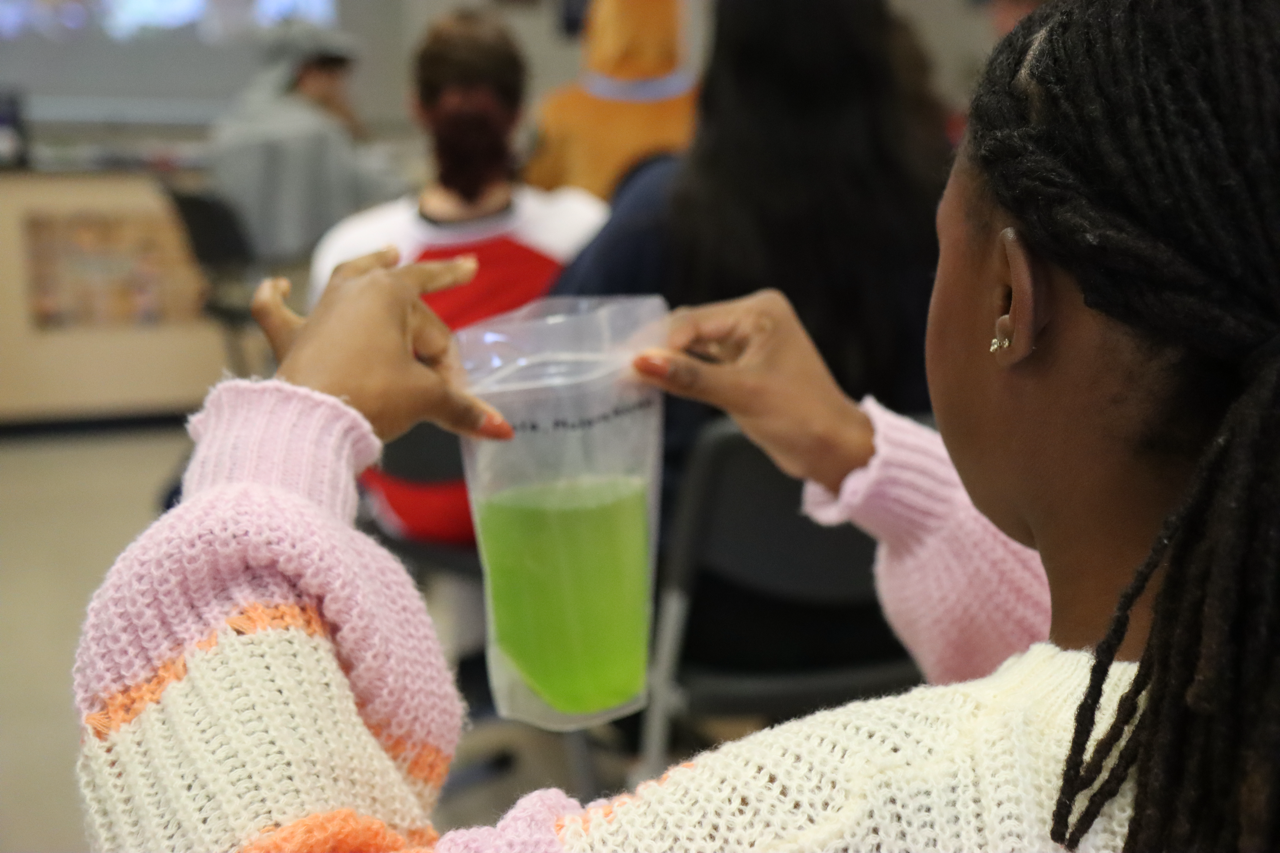
Education Administrators
Placing Your Order
How do I order with a PO?
Yes, we accept Purchase Orders from most educational institutions! Simply choose to pay with a PO at checkout, then email me the PDF of your PO with your order number to
Service@AlgaeResearchSupply.com
How do I get tax exempt status?
Is your institution tax exempt? No problem! If you are ordering from outside of CA or NY, our system does not collect taxes. If you are in CA or NY and it is your first time ordering, email me your tax exempt form so I can update your profile!
Can I delay my order for later in the year?
Absolutely! Please email me as soon as you place the order with your requested delivery date so I can make sure to get it on the calendar.
Will you send me a quote?
Sure! Send us an email with what you'd like to order, your shipping address, and requested delivery speed. We will try to get back to you within the business day!
How long will it take to get my order?
This depends largely on the shipping speed and where you are located in the country. We generally ship everyday Monday through Friday (Fake Fluorescent Food kits only go out on Mondays/Tuesdays). Cutoff for order fufillment is 12pm PST.
Standard shipping: 3-5 days
Expedited Shipping: 1-2 days
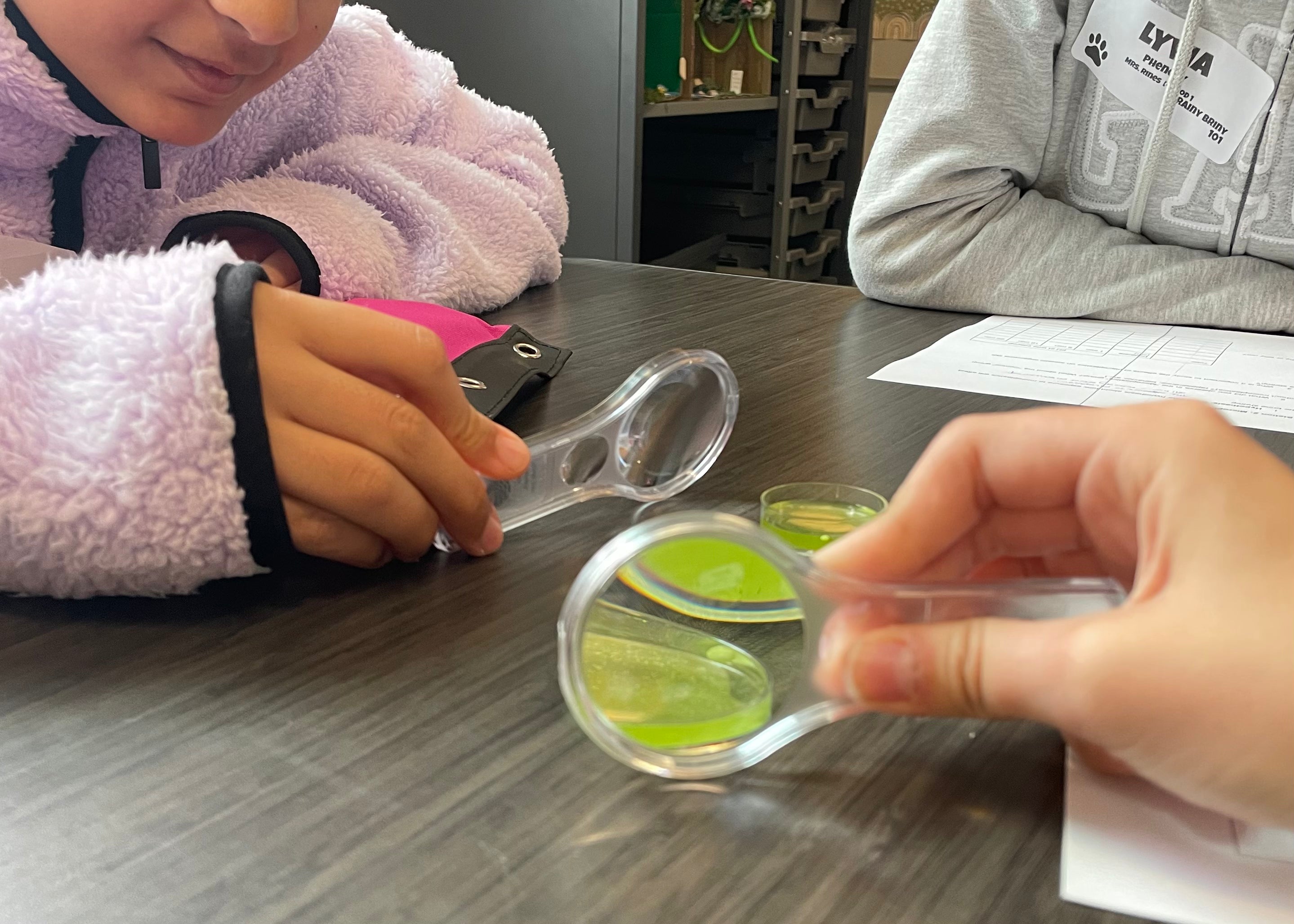
Projects by Teaching Standards
Use this page to determine what projects to do in your classroom, and how they align with NGSS, STAR, and Florida Science Standards.
Elementary School
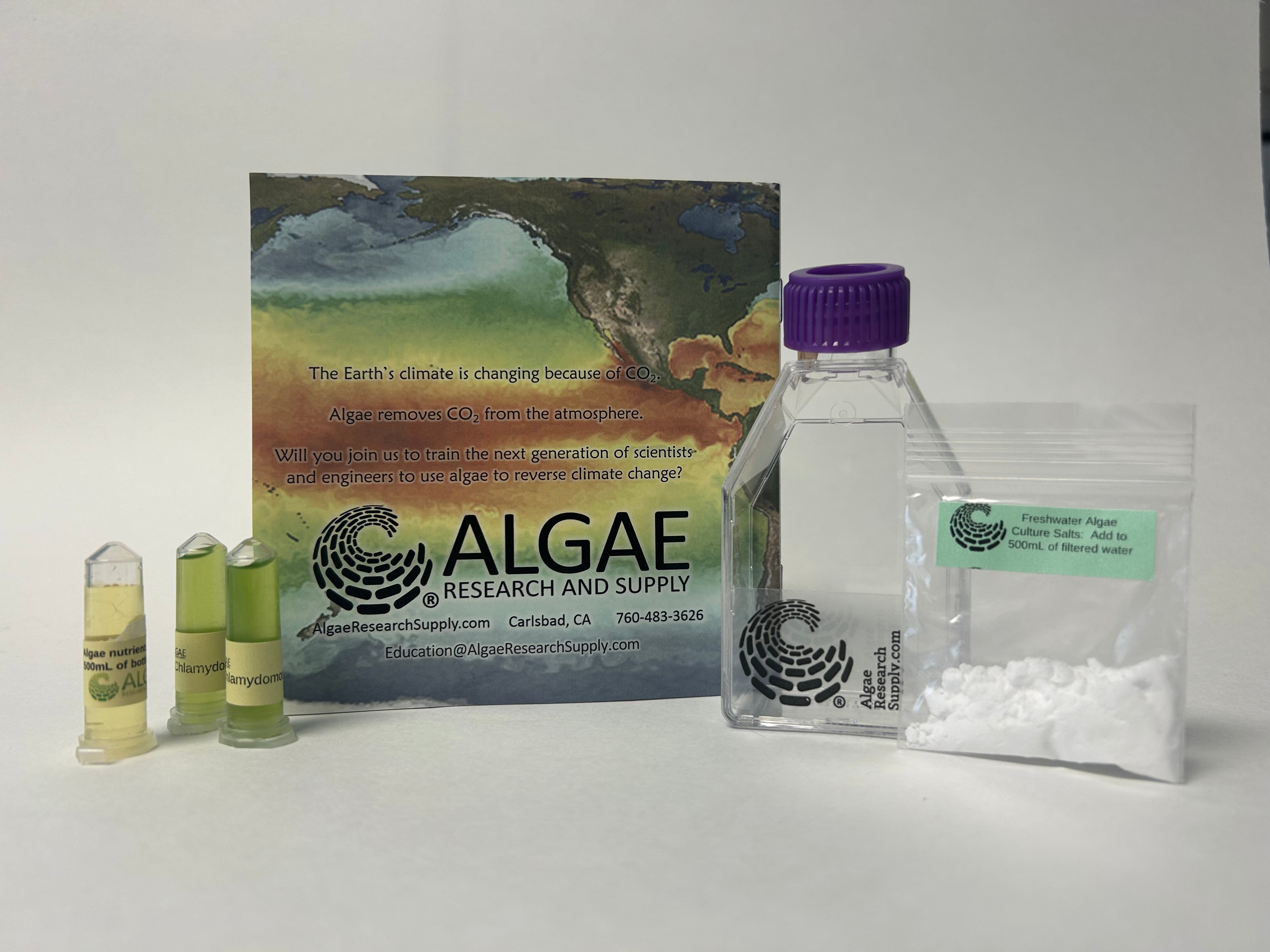
Algae Culturing Kit
Students culture living microalgae and observe growth under different conditions.
NGSS: LS1.C - Organization for Matter and Energy Flow in Organisms
ESS3.A - Natural Resources
SEP - Planning and carrying out investigations, analyzing and interpreting data
Florida: SC.3.L.14.1 - Understanding how plants use light and nutrients to grow
SC.5.L.17.1 - Roles in ecosystems
STAR: Observational and experimental design with live organisms and life cycles
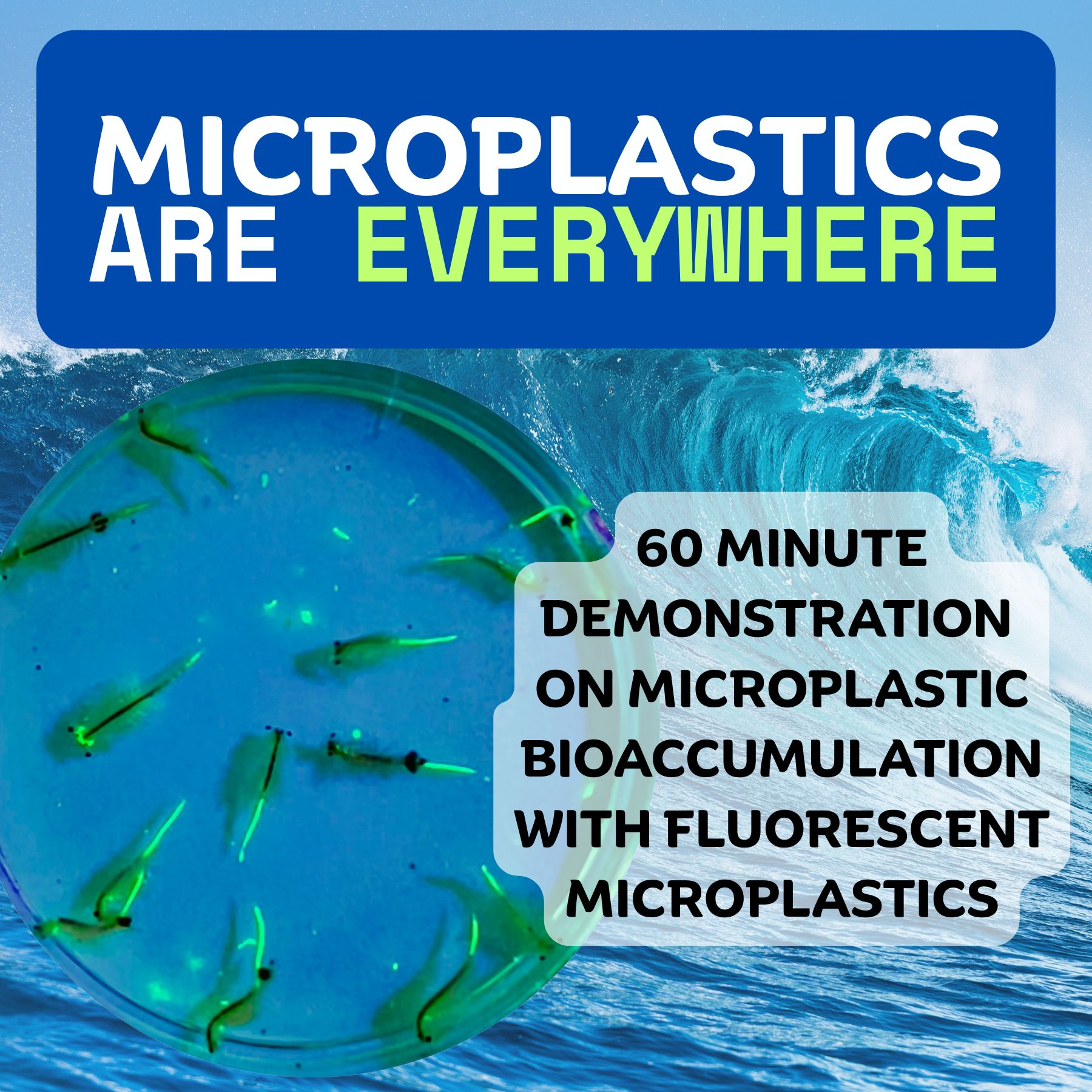
Brainy Briny: Flake Fluorescent Food
Uses safe materials to simulate bioaccumulation, fluorescence, and human impacts on the environment.
NGSS: ESS3.C - Human Impacts on Earth Systems
LS2.A - Interdependent Relationships in Ecosystems
LS2.B - Cycles of Matter and Energy Transfer in Ecosystems
SEP - Developing and using models; analyzing and interpreting data
Florida: SC.4.L.17.4 - Recognizing ways humans impact the environment
SC.5.L.17.1 - Compare and contrast adaptions in ecosystems and human influence
STAR: Emphasizes systems thinking and real-world environmental issues
Supports inquiry into how human activities affect food webs and long-term ecological balance
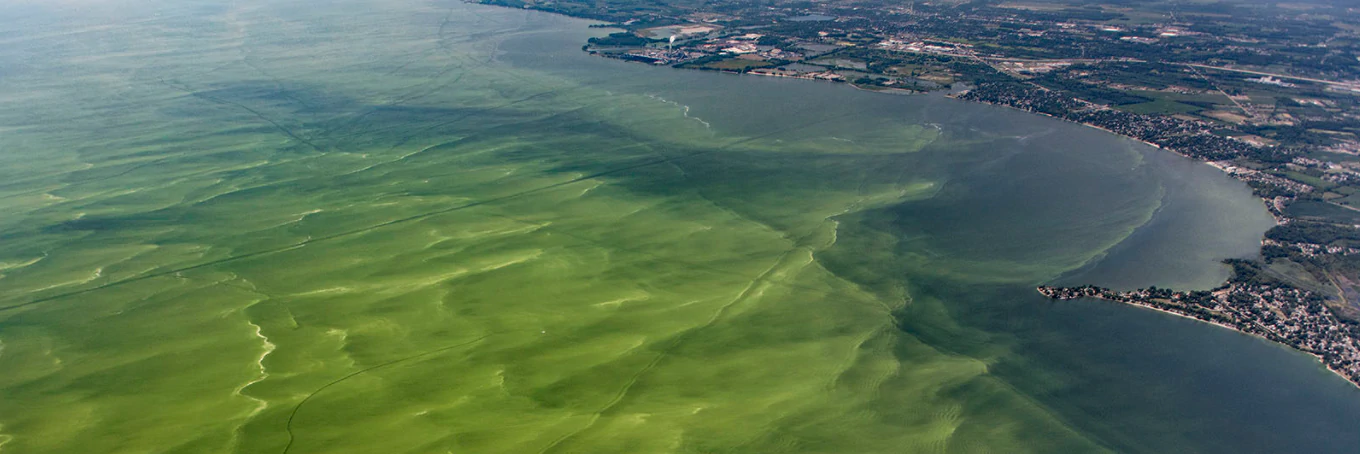
Pollution: Algae Bloom
Models the process of nutrient pollution and its impact on aquatic systems using algae as an indicator. This project can be adapted to any grade level, but depends on observations, the scientific method, and critical thinking.
NGSS: ESS3.C - Human Impacts on Earth Systems
LS2.A - Interdependent Relationships in Ecosystems
SEP - Developing models, constructing explanations
Florida: SC.4.L.17.4- Recognizing ways humans impact the environment
SC.5.L.15.1 - Energy flow in ecosystems
STAR: Systems thinking and cause-effect relationships in environmental change
Middle School

Brainy Briny: Flake Fluorescent Food
Uses safe materials to simulate bioaccumulation, fluorescence, and human impacts on the environment.
NGSS: ESS3.C - Human Impacts on Earth Systems
LS2.B - Cycles of Matter and Energy Transfer in Ecosystems
SEP - Modeling, data interpretation, evidence-based argumentation
Florida: SC.7.L.17.3 - Food web disruption by human actions
SC.6.L.14.4 - Environmental influence on organism function
STAR: Engages students with current environmental concerns
Supports inquiry into pollutant pathways and health impacts
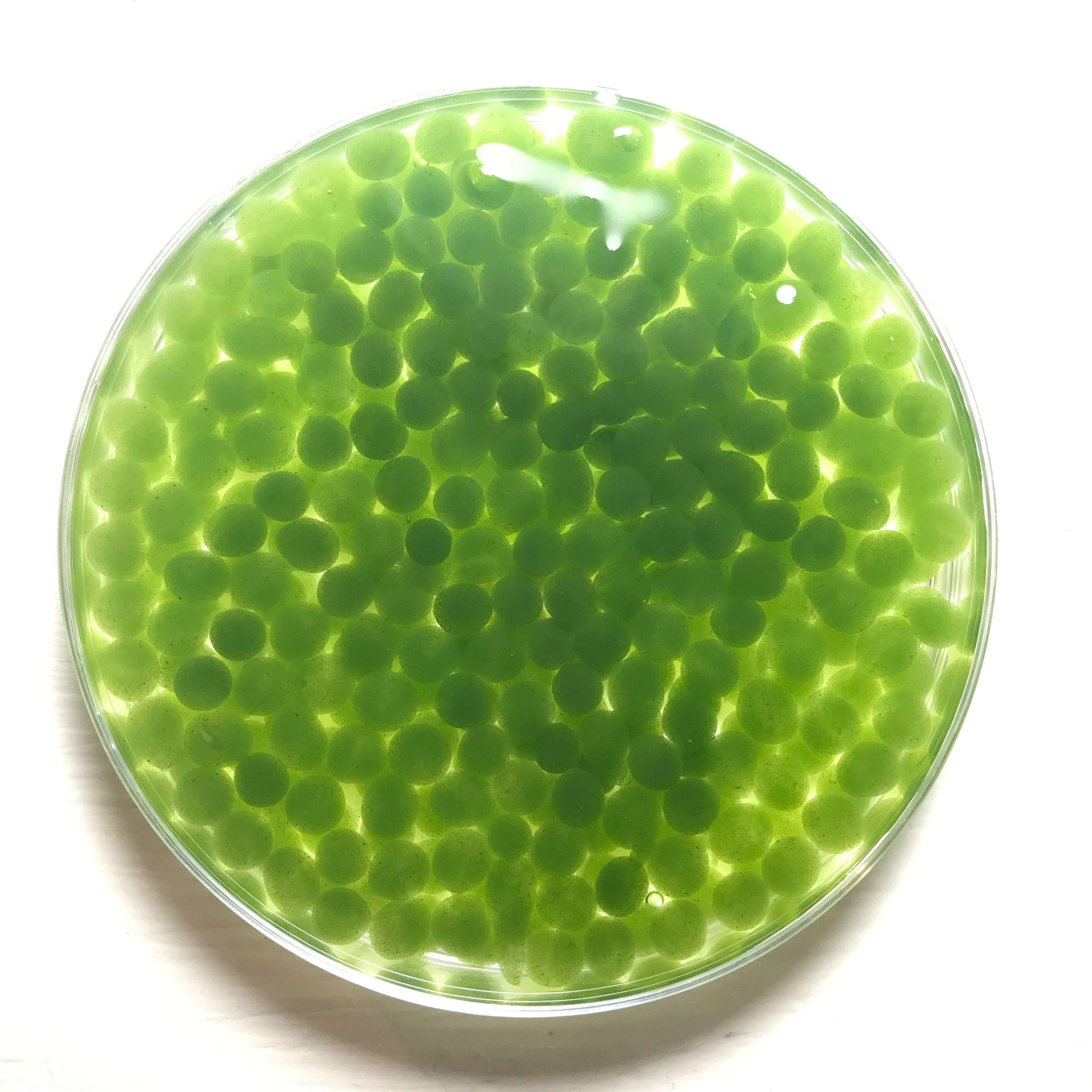
Algae Beads
Students use pre-grown or DIY algae beads to explore photosynthesis, cellular respiration, and environmental changes in a hands-on model. Beads change color with pH indicators, making gas exchange (CO₂/O₂) visible and measurable.
NGSS: LS1.C - Organization for Matter and Energy Flow in Organisms
PS3.D - Energy in Chemical Processes
SEP - Planning and carrying out investigations, interpreting data, modeling systems
Florida: SC.6.L.14.1 - Recognize major processes like photosynthesis and respiration
SC.8.N.1.2 - Conducting and analyzing scientific investigations
STAR: Reinforces experimental design and visible biological processes.
Promotes modeling and observation of abstract cellular functions.
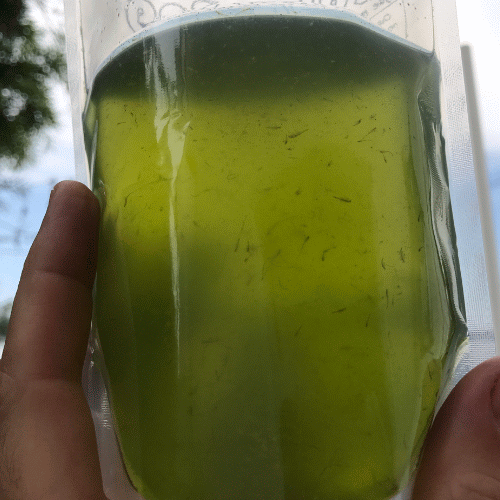
Brainy Briny in a Beaker Bag
A hands-on ecosystem-in-a-bag that engages students in learning about photosynthesis, cellular respiration, trophic energy transfer, algae and zooplankton dynamics, and population changes.
NGSS: LS1.C - Organization for Matter and Energy Flow in Organisms
LS2.A - Interdependent Relationships in Ecosystems
LS2.B - Cycles of Matter and Energy Transfer in Ecosystems
SEP - Planning and carrying out investigations, modeling energy flow, interpreting data
Florida: SC.6.L.14.4- Recognizing the roles of photosynthesis and respiration in plants
SC.7.L.17.2 - Examine interactions in ecosystems, food chains/webs, and energy flow
SC.8.N.1.2 - Design and evaluate scientific investigations
STAR: Emphasizes life and environmental science connections
Encourages systems thinking, inquiry, and real-time ecosystem observation
High School/AP

Brainy Briny in a Beaker Bag
Students explore a self-contained aquatic ecosystem with algae and zooplankton. Supports analysis of photosynthesis, respiration, trophic energy transfer, and population dynamics in live systems.
NGSS: LS2.A - Interdependent Relationships in Ecosystems
LS2.B - Energy Transfer and Matter Cycling
LS1.C - Matter and Energy Flow in Organisms
SEP - Modeling trophic levels, constructing explanations from observations
Florida: SC.912.L.17.9 - Food webs, energy transfer, and ecosystem structure
SC.912.L.17.6 - Environmental limits and species survival
STAR: Energy transformations in photosynthesis and respiration
Relationships among organisms, food webs, carrying capacity
AP Bio: Investigation 10 - Energy Dynamics
APES: Investigation 10: Energy Flow Through Ecosystems
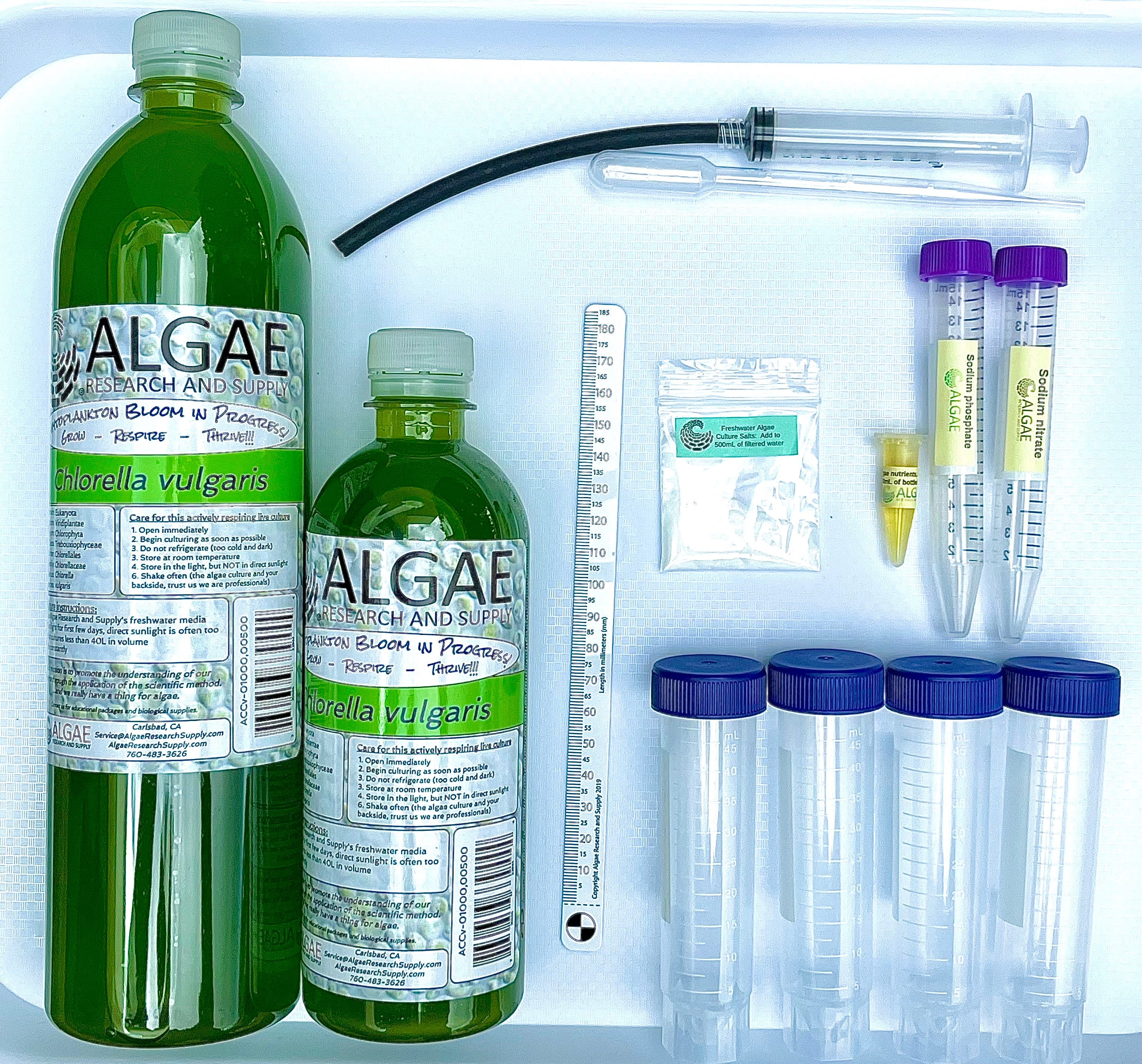
Eutrophication
Students model eutrophication by examining how nutrient runoff impacts algae growth, oxygen levels, and biodiversity. Supports data-driven reasoning, systems modeling, and human-environment analysis.
NGSS: ESS3.C - Human Impacts on Earth Systems
LS2.C - Ecosystem Dynamics, Functioning, and Resilience
SEP - Analyzing and interpreting data, modeling systems, and constructing explanations
Florida: SC.912.L.17.5 - Population dynamics and limiting factors
SC.912.L.17.12 - Human impact on air, water, and soil quality
STAR: Effects of abiotic factors and pollutants on ecosystem structure
Design and interpretation of environmental impact studies
APES: Investigation 12 - Water Pollution and Algal Blooms
Investigation 15 - A Study of Eutrophication

Algae Beads
Uses immobilized algae in beads to visually measure photosynthesis and respiration using color change (pH indicators). Students explore carbon cycling, dissolved gas dynamics, and can run precise comparative experiments.
NGSS: LS1.C -Energy Flow in Cells
LS2.B - Cycles of Matter and Energy Transfer in Ecosystems
SEP - Designing investigations, modeling energy processes, using indicators to measure biological activity
Florida: SC.912.L.18.7 - Cellular energy transformations
SC.912.L.18.9 - Photosynthesis and respiration roles in biogeochemical cycles
STAR: Photosynthesis and respiration as complementary processes
Controlled variable experiments, interpreting biological data
AP Bio: Investigation 5 - Photosynthesis
Investigation 6 - Cellular respiration


